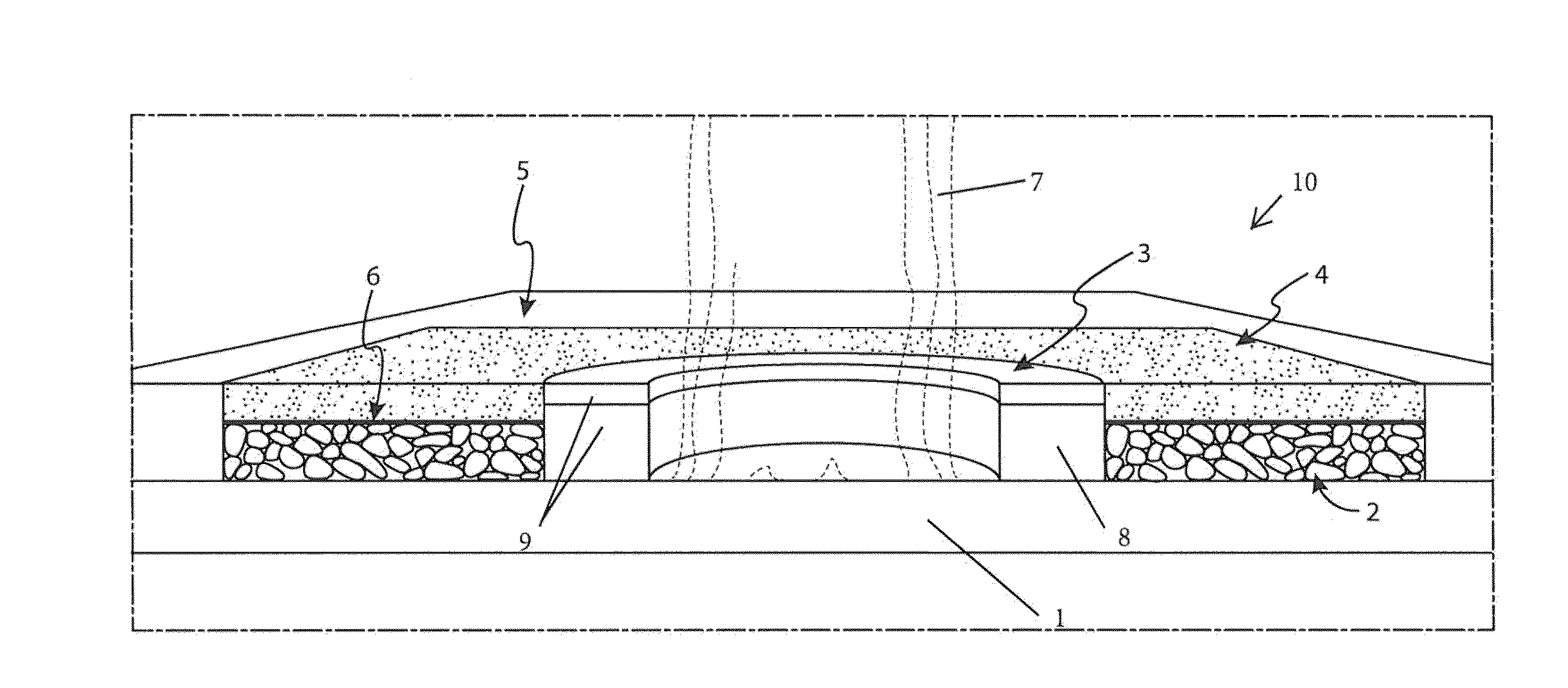Tree Well and Related Methods
a tree well and tree well technology, applied in the field of urban landscaping, can solve the problems of urban trees getting water, storm water, and tree boxes can attract weeds, and achieve the effects of reducing odor and trash problems, reducing damage to sidewalks, and ensuring safety
- Summary
- Abstract
- Description
- Claims
- Application Information
AI Technical Summary
Benefits of technology
Problems solved by technology
Method used
Image
Examples
Embodiment Construction
[0030]Disclosed is a method for creating a tree well comprising: creating a perimeter around the tree; spreading gravel in the tree well to outside of the barrier; mixing an epoxy aggregate and crushed stone via a mixer; pouring the mixture into the well while still wet, so the epoxy aggregate is compacted, substantially flush with the sidewalk, and finished with a trowel; mixing rubber buffings with an aromatic binder in a mixer; pouring the mixture into the perimeter next to the tree to about the same level as the gravel layer and marble; mixing ethylene propylene diene monomer (EPDM) with an aromatic binder in a mortar mixture and pouring it on top of the rubber buffings; and, letting the mixture dry.
[0031]FIG. 1 describes the process for creating a tree well. In one embodiment for pedestrian areas, the system requires three quarter inch gravel, one quarter inch crushed marble, epoxy resin for aggregate, rubber buffings, ethylene propylene diene monomer (EPDM), preferably one to ...
PUM
 Login to View More
Login to View More Abstract
Description
Claims
Application Information
 Login to View More
Login to View More - R&D
- Intellectual Property
- Life Sciences
- Materials
- Tech Scout
- Unparalleled Data Quality
- Higher Quality Content
- 60% Fewer Hallucinations
Browse by: Latest US Patents, China's latest patents, Technical Efficacy Thesaurus, Application Domain, Technology Topic, Popular Technical Reports.
© 2025 PatSnap. All rights reserved.Legal|Privacy policy|Modern Slavery Act Transparency Statement|Sitemap|About US| Contact US: help@patsnap.com



